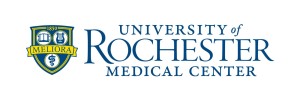July 11, 2014 | Long-Term Care
 In the latest indication that telemedicine holds tremendous promise for virtually every segment of the patient population, the University of Rochester Medical Center is conducting a high-profile research trial to evaluate the technology’s benefits for older individuals who suffer acute illnesses and injuries. The trial covers 250 senior citizens who reside at seven assisted living and long-term care facilities in the Rochester area. Through a telemedicine link, the physician can provide same-day evaluations and examinations for these patients without requiring them to drive or ride to a distant clinic or hospital.
In the latest indication that telemedicine holds tremendous promise for virtually every segment of the patient population, the University of Rochester Medical Center is conducting a high-profile research trial to evaluate the technology’s benefits for older individuals who suffer acute illnesses and injuries. The trial covers 250 senior citizens who reside at seven assisted living and long-term care facilities in the Rochester area. Through a telemedicine link, the physician can provide same-day evaluations and examinations for these patients without requiring them to drive or ride to a distant clinic or hospital.
Accommodating the Needs of Seniors
Participants will receive their care through UR Medicine’s Geriatrics Group. Patients are encouraged to bring acute health issues to the attention of the group, which schedules same-day telemedicine consultations. During the telemedicine sessions, the patient works with a trained assistant in their home or long-term care facility and speaks via broadband connection with a specialist or primary care physician at the university’s hospital.
During these examinations, the doctor-patient interaction unfolds much as it would in an office setting. It’s possible to take the patient’s vital signs, use a “virtual” stethoscope, determine the patient’s comfort and pain levels, order blood tests and send prescriptions directly to the patient’s pharmacy. In many cases, the outcome of a telemedicine examination is similar to that of an in-person consultation. However, the patient isn’t required to leave his or her residence unless the doctor finds a more serious issue that requires advanced testing and treatment.
Is It Working?
Thus far, the results of this telemedicine trial have been very encouraging. The consultations often identify potentially serious illnesses before they become painful or life-threatening, improving patients’ quality of life and care outcomes in the process. “It is gratifying to be able to identify pneumonia early on, which can avert a hospitalization,” says Manish M. Shah, M.D., M.P.H., the study’s principal investigator and URMC’s associate professor of emergency medicine, geriatrics/aging and community/preventive medicine. “[It’s also important to be able to] treat something described as a ‘rash’ or ‘foot pain’ that turns out to be a diabetic ulcer or cellulitis.”
In fact, says Shah, senior citizens who fear the prospect of being admitted to a hospital or transported to a clinic may be reticent to bring up health concerns with family members or younger friends. Many telemedicine consultations are resolved without the need for hospitalizations. When a consultation does result in a doctor’s hospitalization order, patients tend to be less resistant to the idea.
Although the study’s final findings haven’t yet been released, it’s tracking a wide range of factors that affect outcomes and efficacy. Over the longer term, the study could result in the creation of a subscription service that further streamlines the delivery of telemedicine-based care to senior citizens who live in retirement communities.
A Favorable Landscape for Telemedicine in Geriatric Care
Going forward, the need for telemedicine in senior citizen care will only increase. An aging population and a persistent shortage of geriatric specialists threatens the quality and timeliness of care for elderly individuals. Although telemedicine can’t create new geriatricians, it can connect assisted living and long-term care residents with existing doctors in a more efficient manner. In turn, these patients can expect prompt, high-quality care that – in many cases – doesn’t require hospitalization.

 Back to Blog
Back to Blog

